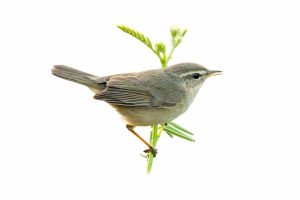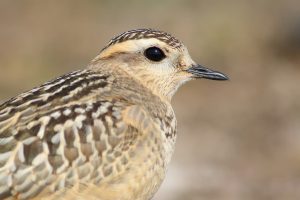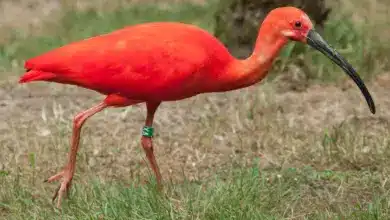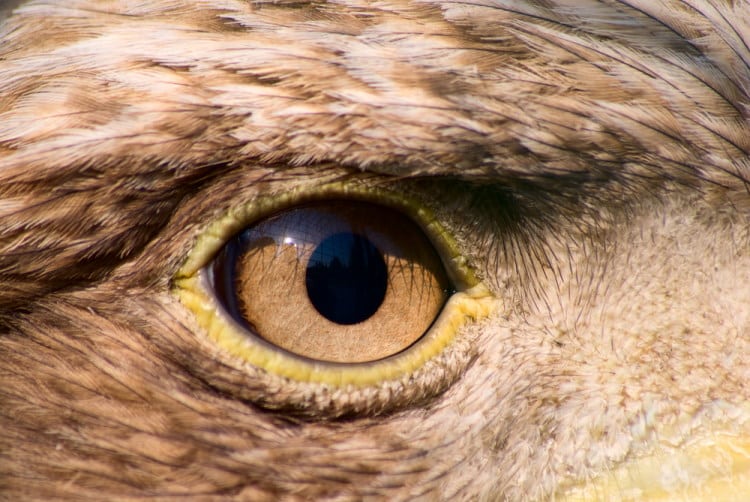Bird Supercilium Or Eyebrow
Bird Anatomy: Bird Supercilium or “Eyebrow”
The Bird Supercilium is also known as the “eyebrow”. It’s a dark stripe that starts just above the loral region (the area between the beak and the eyes) and continues above the eye.
When a stripe only extends above the lores and not behind the birds eye it’s called a Supraloral Stripe, or just supraloral.
These differ from the eye stripe, which is a horizontal line that runs along the lores and behind the eyes.
It is found at the base of some birds’s beaks. The eyebrow is the stripe that extends from the beak of a bird to the top of its eye.
Superciliums can help identify birds by their colour, shape and other characteristics. The supercilium can help distinguish the Dusky
A divided bird supercilium separates above the lores. Some species such as jacksnipes, re-connect the separated stripes behind the eyes.
You can also find out more about the A-Team here. supercilium drop This is an option found in some Pipits. It is a paler spot at the back of the ear-coverts The supercilium, which is separated by the eyestripe from this part, may appear to some people as a continuation downward of that supercilium.
The Bird Supercilium or “Eyebrow”
Resting just above the eyes of many bird species are distinctive bands of modified feathers called the supercilium. These striking “eyebrows” frame the face and can be raised or lowered at will. It is far more than a cosmetic feature. This dynamic anatomical structure plays a key role in avian communication, species recognition, mating rituals, and survival.
Early observers like John James Audubon took note of striking supercilium patterns and variations across avian families. Scientific illustrations from the 1800s onward paid special attention to supercilium markings, highlighting their taxonomic importance. Today, ornithologists continue uncovering new insights into the anatomy, genetics, evolution, and conservation of these specialized feathers.
In this article, we will explore the form and function of the supercilium across diverse bird families. We will uncover how evolution has shaped the avian eyebrow into an integral signaling apparatus and examine some of the most unique and elaborate superciliary adaptations found across habitats worldwide.
Anatomy
The bird supercilium refers to a specialized band or patch of feathers located above the eye. It arises just behind the frontal shield of the forehead and extends rearwards, sometimes wrapping around over the ear coverts. While variable in shape and size, the eyebrows of most species sit prominently above the orbit, partially overhanging the eyes.
Superciliary feathers can differ in structure, length, stiffness, and coloration from surrounding plumage. Frequently, they are more rigid and can be voluntarily raised or lowered by small muscles. Some taxa’s feathers are elongated into ornamental plumes or brightly pigmented.
The bird supercilium may be continuous or broken into two sections above each eye. Some species lack a defined eyebrow altogether. When present, the supercilium frames the facial disk and enhances the visible expressions used in avian communication.
Functions and Adaptations
Communication and Expression
The bird supercilium plays a key role in avian communication, from courtship displays to alarm calls.
From courtship displays to alarm calls, supercilium movements provide birds with a nuanced signaling vocabulary. A subtle eyebrow raises, and flashes convey mood, intent, and disposition between members of the same species. Supercilium motions accentuate important facial expressions associated with aggression, courtship, alarms, and more.
During mating rituals, males frequently utilize complex supercilium displays to attract females. Bright, colorful feathers are flared and erected to signal health and dominance. Comparatively elaborate or symmetrical male supercilium features indicate fitness and are preferred in mate selection.
In many taxa, supercilium variations also play a role in parent-offspring communication and bonding. Fledged chicks seek out the distinctive supercilium pattern of their parents in the colony. Considering its integral role in avian behavior, the supercilium provides a window into the intricate social world of birds.
Species Recognition
The supercilium’s distinctive shape, color, and position provide an easily recognized visual cue. This helps birds rapidly identify members of their own species for flocking, choosing mates, and parenting. Characteristic eyebrows aid recognition even amidst sympatric, similar-looking species.
Sexual Dimorphism
In many species, the male’s supercilium differs conspicuously from the female’s. Male birds frequently have brighter, bolder, or more ornamental superciliary feathers to attract mates and signal dominance. Sexual selection has driven the evolution of exaggerated eyebrows.
Environmental Adaptations
Habitat and ecology shape supercilium form and function. Bold eyebrows may be favored in densely vegetated environments to amplify visual signals. More subdued eyebrows provide camouflage in open environments.
Camouflage is a key supercilium function for numerous species. In open environments, muted browns, streaks, and irregular speckling help birds blend into their surroundings by breaking up the facial outline.
In aquatic habitats like marshes, striking white or yellow supercilium bands contrast against darker plumage to amplify signaling across distances. Arboreal birds adapt with vivid flashes visible even amid dense forest vegetation.
Urban-adapted birds often exhibit reduced ornamentation but heightened contrast, with bold supercilium stripes or bright patches to facilitate communication against the backdrop of human structures.
Thermoregulation
Bare supra-orbital skin may facilitate heat loss in hot climates. Insulative superciliary feathers protect species like snowy owls in frigid environments. Positioning can shade eyes from desert sun or glare.
Protection
Stiff, elongated superciliary feathers physically shield the eyes from threats like blowing sand, thorns, or insect bites. Overhanging eyebrows also create shadows to reduce glare.
Case Studies of Diverse Supercilia
White-Winged Crossbill
This finch uses its unique crossed bill to pry seeds from conifer cones. The broad white supercilium contrasts sharply with its otherwise dull plumage. When raised, the eyebrows enhance the bird’s facial expressions as it communicates.
Blue Bird-of-Paradise
Males of this rainforest species have an iridescent turquoise brow and crown used in breeding displays. The flexible superciliary feathers are flared upwards during courtship to attract females within the dense foliage.
Verreaux’s Eagle-Owl
This African owl has striking pink eyebrows set against dark brown facial disk feathers. The bright supercilium helps chicks find the mother’s face for feeding in low light. The prominent eyebrows also facilitate silent communication in the dark.
Northern Cardinal
The male’s iconic red crest feathers extend forward into a reddish supercilium, emphasizing his jet-black face. Females have a more muted grayish-brown supercilium. The “eyebrows” aid their frequent vocal communication.
A Global Perspective on Eyebrow Diversity
Tropical Supercilia
Tropical species like manakins and cotingas often have brightly colored, elongated superciliary feathers used in energetic mating displays. Bold patterns stand out against dense forest vegetation.
Desert Supercilia
Desert birds tend to have more subtle, paler eyebrows that blend with sandy hues. Bare supra-orbital skin also aids heat dissipation. The supervision shades eyes from harsh sunlight.
Arctic/Tundra Supercilia
Dense, insulated superciliary feathers help conserve heat among species like snow buntings and long-tailed jaegers. Positioning can minimize glare from snow and ice. Ptarmigans molt into heavier white eyebrows in winter.
Conservation and Research
Indigenous art, myths, and folklore often highlight the supercilium, captivated by this expressive anatomical feature. Scientists have also used distinctive supercilium shapes, patterns, and colors to classify species and illuminate evolutionary relationships.
Specialized bird supercilium adaptations signify overall genetic diversity. Tracking changes can reveal population threats like habitat loss well before numbers decline. Targeted conservation action can then protect unique supercilium features.
Tracking Adaptations
Changes in supercilium size, shape, and color over generations provide insight into evolutionary adaptations. Loss of unique superciliary features may signal declining diversity.
Reintroduction Monitoring
Characteristic superciliary patterns facilitate the identification of reintroduced birds and their offspring to track establishment success.
Climate Change Impacts
As habitats shift, unique supercilium adaptations may be lost. Maintaining connected habitats and genetic diversity provides resilience.
Public Engagement
Community science projects focused on the supercilium enhance public interest in conservation. Amateur photographs also showcase eyebrow diversity.
Future Research
We have more to discover about the genetics, developmental biology, and sensory capabilities. New technologies will provide insights into feather structural coloration and communication.
Studies across species and environments will reveal the full extent of nature’s innovation in sculpting the avian eyebrow.
From studying developmental pathways to analyzing feather structures, new technologies provide continued opportunities to deepen our understanding and appreciation of the remarkable avian eyebrows. Each species’ supercilium adaptation stands as an individual work of nature’s art honed over millennia.
Examples
The rufous-and white Wren is distinguished by a supercilium, a line above the eye. It also has a dark stripe running through its eye.
The Eurasian Dotterel is distinguished by a striking white supercilium.
This Louisiana Waterthrush is distinguished by a white supercilium.
Conclusion
From silent communication in owls to gaudy courtship plumes in birds of paradise, the bird supercilium exemplifies evolution’s ability to shape unique structures matched to function and lifestyle.
This expressive anatomical feature so critical to avian behavior remains underappreciated. A closer look at the diversity of the humble eyebrow highlights nature’s endless creative capacity.





